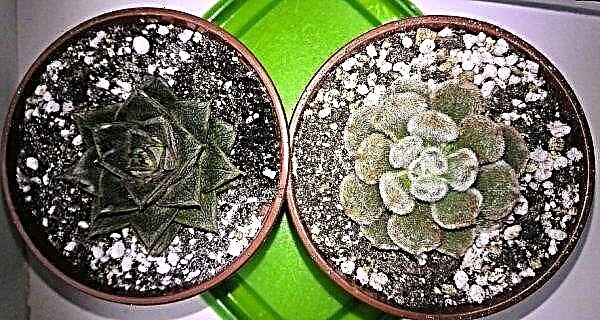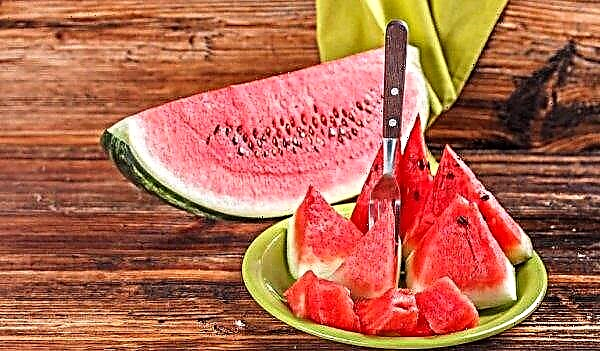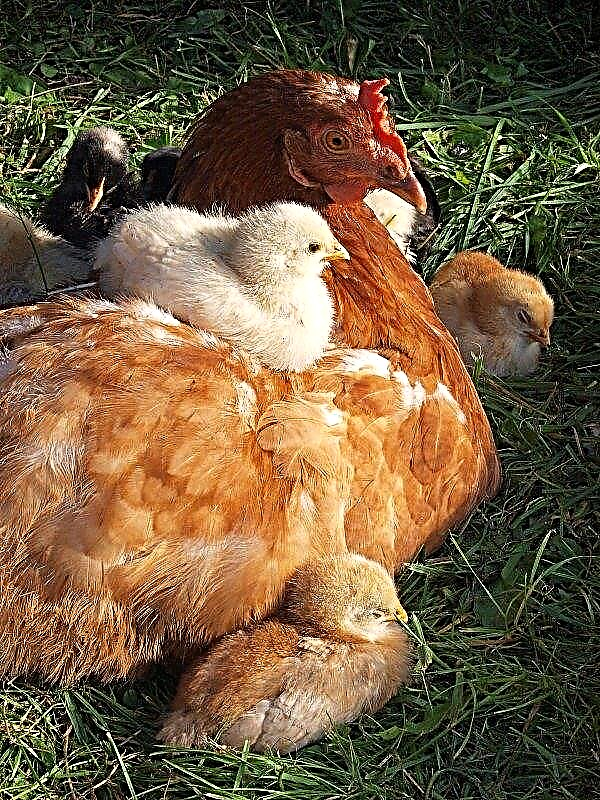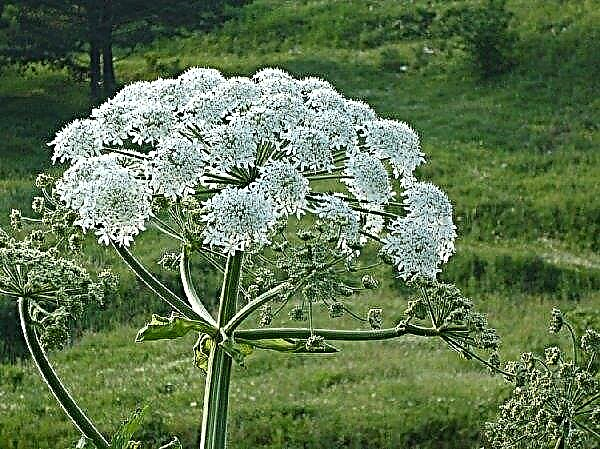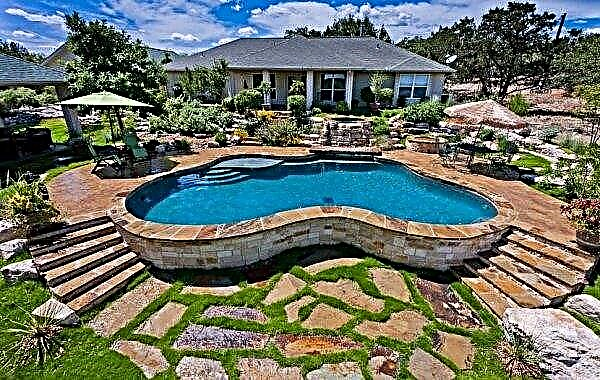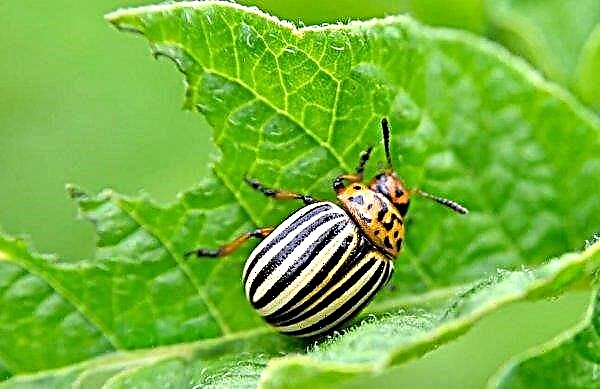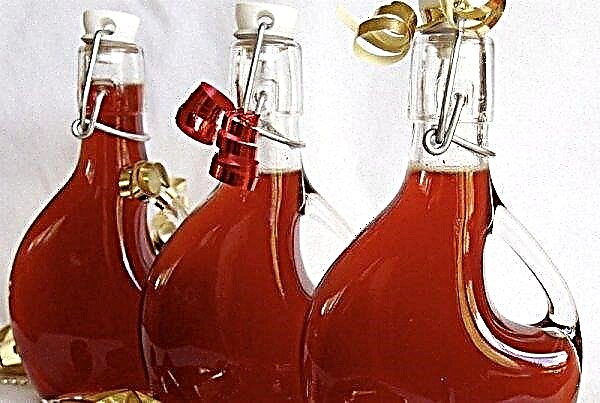Canadian spruce rightfully occupies an honorable place among the plants used to create the unique appearance of urban landscapes and summer cottages. It is widely used for decorative landscaping due to its unusual shape and bright shades of needles.
View description
The shape of these trees is mainly conical, but there are also spherical representatives of this species. The needles are bright, green, bluish, blue, it also happens with white young growths. It is usually short, stiff, prickly. A tree that grows in the wild can reach 15–18 m in height, but the sizes of cultivated varieties are much smaller - up to a maximum of 2 m.
Common varieties
The most common varieties of very original gray spruce spruce: Konika, Radiant Sun, Pendula, Rainbow End, Sanders Blue, Daisy and Alberta Globe. All of them are similar to each other in their short stature and shape, but, of course, each variety has its own characteristics.
Konika
The most popular and most common variety is Konika. And this is not surprising, because it has a simply charming appearance that can decorate any landscape. In its shape, this spruce resembles a narrow cone. She has a very thick crown. The needles on its branches are gray-green, soft to the touch, radial, short. The root root is fairly compact, most of it is close to the surface of the earth, which must be taken into account when loosening the soil.
Did you know? The first time the Christmas tree was decorated in Riga in 1510.
This variety of spruce grows slowly. Over the year, it increases only by 3-4 cm. With good care, an adult plant can reach 3 m in height, although, as a rule, representatives of this variety are not higher than 1 m. Konika is simply indispensable for creating hedges. Its main drawback is the strong burnout of the crown under the influence of sunlight in the spring.
Video: Konika spruce
The radiant sun
This variety, like many other Canadian spruces, grows rather slowly and grows, as a rule, no higher than 1 m. This variety is a perfectly shaped cone. The crown is thick, with high decorative properties. The needles on the fresh shoots are light yellow, later it becomes blue-green. Spruce The radiant sun is undemanding in care and grows on different soils. To improve the appearance, it is advisable to plant it in places accessible to sunlight.
Alberta Globe
The Alberta Globe variety is a Konica mutation, but differs from it in appearance. This is an evergreen spherical shrub. The young needles are yellow-green, then it becomes bright green. This variety grows very slowly. The diameter of this unusual ball in adulthood is 1 m.
Alberta Globe loves to grow in the sun, but she also feels normal in the shade. The rhizome is very close to the surface of the earth, so the soil under it must be constantly moistened. Better yet, mulch the area around the plant. Spruce Alberta Glob looks very profitable in oriental compositions, and it is often grown in pots.
Video: Canadian fir Alberta Globe
Daisy
This miniature tree in its shape and color resembles the Konik variety. Its growth is very slow. Over 10 years, it grows only to 80 cm. Daisy's needles are short, soft, green, like Konica. Young shoots appearing in the spring are yellowish-white, then they turn green. The next summer growth in color is the same as the old branches. Since white young needles can burn out, it must be protected from spring sunlight.
Important! When combining various types of conifers, their relation to the frequency of watering must be taken into account.
The soil in the places of its growth should be drained, rich in nutrients, and also moderately moist. To protect against drying out, the surface of the hole in which the tree grows is preferably mulched with peat or grass. Due to its high decorative qualities, the Daisy variety is used to create a heather garden, and is also combined with other dwarf conifers in group plantings. Daisy grows well in places with different lighting, but, of course, feels better in the sun.
Daisy grows well in places with different lighting, but, of course, feels better in the sun.
Sanders Blue
Trees of this variety are slightly narrower than Konika, but have the same conical shape. But Sanders Blue’s height is very small, it grows in 10 years to only 70 cm. The tree has many shoots, the needles on them are short and thin, silver-blue. Young needles are brighter than old ones.
Sanders Blue needs good lighting, but the first few years it needs to be protected from burns received in the spring sun. It is better to choose soils for it slightly acidic, moderately moist and well-drained, on which water stagnation is excluded.
Video: Canadian spruce Sanders Blue
Rainbow end
This is a miniature plant in the shape of a cone. Its needles have a beautiful green color in the spring, and in the summer it becomes bright yellow. The tree grows very slowly and, as a rule, does not exceed 1 m in height. Rainbow End needles are short, soft. Fresh shoots of light green color.
In early spring, they can burn out under the scorching sun, so at this time they need to be covered. If the tree grows in the shade, its color will be dull, so it is better to choose sunny places. In landscape design, it is often used for contrast plantings, as well as grown in pots.
Video: Canadian spruce Rainbow's End
Pendula
This is a very unusual tree with hard, hanging branches, some of which almost lie on the ground. Its central shoot, which further forms the trunk, needs to be tied up so that the spruce grows up. It is on this that its height depends. An unconnected tree begins to grow down, due to which a weeping form forms, and the branches sink to the ground.
The needles are short, green, on young shoots it is slightly lighter. Pendula variety needs good watering, but can do without it for some time. Water perception is very poorly perceived. It is advisable to grow it in places where there is more sun, and, moreover, on light fertile soils.
Video: Pendula spruce
How to plant
Canadian spruce is propagated by cuttings, seedlings or seeds that ripen in cones. If you do not want to wait long, the easiest way is to buy a seedling in a nursery.
You need to choose a spruce for planting, taking into account such moments:
- the shape of the seedling must match the variety you have chosen;
- the color of the needles should be bright and saturated;
- branches cannot be with any physical defects;
- the rhizome must be developed, with many sprouted roots, not knocked to the total mass;
- you need to choose the roots, covered with a layer of earth and wrapped in a net or a damp cloth.

Planting blue-gray spruce occurs in the following sequence:
- Choose a suitable place, well-lit and protected from drafts.
- Dig holes twice as large as root size. The distance between plants should be at least 2 m.
- Pour broken brick or expanded clay to the bottom to make drainage. Its layer should be about 20 cm.
- Put soil or compost into the pit, filling it about halfway.
- Place the young tree in the pit so that the root neck is above the ground.
- Sprinkle the seedling with soil.
- Take a little, only carefully so as not to break the roots.
- Pour one bucket of water and sprinkle mulch on top (peat, leaves, grass).

Further care
Although the gray or white spruce is not very whimsical to care for, its basic principles must be remembered and followed so that the tree grows and develops correctly. Proper watering, pruning and protection from the spring sun will help grow your plant beautiful and resistant to environmental conditions.
Video: Canadian Spruce Care
Watering and moisturizing
Coniferous trees are resistant to drought, but excess moisture does not tolerate. That is why they are planted in places where groundwater is not closer than 60 cm from ground level. Young plants need abundant watering so that their roots are better formed. And then you need to look at the weather.
Important! The first couple of years, the transplantation of Canadian spruce is very harmful for its growth and development, because if it is poorly rooted, it may not take root in a new place.
If the summer is too dry, you can water young spruce once a week using one bucket of water. For older trees, you need to take two buckets. And they are also very good at regular spraying of the crown with water, thanks to which the needles look brighter and healthier. If it rains often in the summer, it is quite possible to do without additional watering.
Sun protection
Since young dwarf spruces can burn out in the sun, they must be covered in spring. And it’s best to plant them in such a place so that there are large trees nearby with a not very dense crown through which diffused sunlight can break through.
Pruning and pinching
To make the crown more voluminous, you can pinch young shoots of Canadian spruce. This tree practically does not need pruning, because by nature it has a very beautiful shape. But in order to create an interesting silhouette that will successfully complement any composition, you can cut each grade of blue spruce to your liking. And, of course, all damaged and diseased parts of the tree, which cannot be cured and restored, are necessarily cut off.
Video: trimming and shaping spruce
In landscape design
Almost all presented varieties of spruce are quite popular in landscape design. Canadian spruce is very attractive both in single plantings and in group compositions. Due to its very slow growth, it is rarely planted in flower beds, but when it reaches the desired height, the spruce looks great in mixborders.
Did you know? Each fir cone contains about 100 seeds.
When decorating gardens, city parks, for planting on terraces and near houses, this plant is used with pleasure, creating a unique landscape. Due to the resistance of dwarf varieties to the wind, as well as a dense crown, hedges are planted from them, protecting flowers and shrubs. Planting any of the varieties of Canadian spruce is a great idea both when growing a garden, and when creating original parks for walking in the city. In addition, Canadian spruce adapts well to any conditions, and it is very easy to take care of it.
Planting any of the varieties of Canadian spruce is a great idea both when growing a garden, and when creating original parks for walking in the city. In addition, Canadian spruce adapts well to any conditions, and it is very easy to take care of it.


